Wow! How do I follow up my most viewed, most commented, most retweeted post?! I am so appreciative of the interest in real food*. I am glad to be in community with people who support and practice choosing sustainable foodstuffs.
Slaughtering your own animals is not practical for most people, not even us, on a regular basis. So where are the best places to purchase real food?
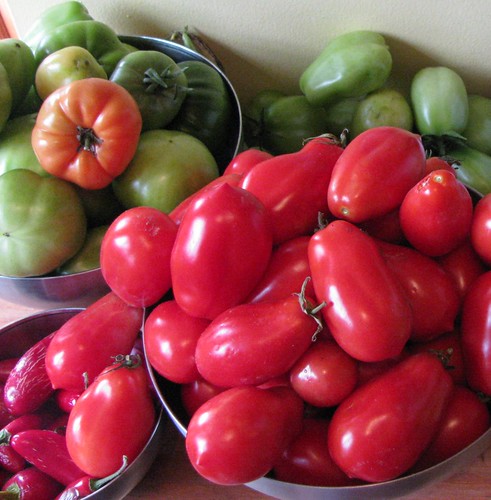
1) Your Backyard - growing your own fruits and vegetables is easily the most local, delicious, and cheapest way to pack your meals with fresh ingredients. My Grow Your Garden series gives tips about how to start or expand backyard gardens. If you don't have space for a backyard garden, search for a community garden plot.
2) Direct from the Farmer - Local farmers are the best source of what you might not be able to grow yourself. Sustainable farmers are excited to share their raw milk, small batch cheeses, free ranged meat, vegetable CSA shares, and more. Find them at a farmer's market (see below) or Local Harvest. Ask around at work and in the neighborhood, as many people know a small farmer or know someone who does.
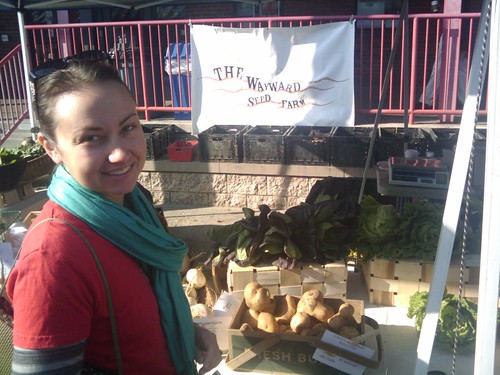
3) Farmer's Market - Our favorite markets are full of stands directly representing individual farms. Some offer CSA pickups. Producers are eager to answer your questions about the variety, farming practices, and cooking use of their produce. Many will take time to chat with you at length, forming friendships and partnerships in the food revolution.
4) Local Grocery - An independent grocer, like our local favorites Weiland's and The Hills, is more adaptable to consumer desires than a chain. If your grocery doesn't carry products you want, request that they stock seasonal produce from local farms. Ask more than once and be prepared to help source the ingredients you desire.
5) Chain Grocery - Even in a chain, you can find real food if you search it out. Read labels and choose seasonal items from as close to your location as possible. Select whole ingredients to make foods from scratch. When buying processed food, read carefully and question contents whose names you can't pronounce or understand as foodstuffs. Local managers at your grocery are sometimes willing and able to take special requests. It never hurts to ask for seasonal and local food.
Where do you shop for food?
*Real food is just another buzz word among 'organic', 'local', 'seasonal', 'sustainable', etc. What I mean in this article is food you can source to a specific producer; whole ingredients that are free from unnecessary additives and processing.

 Did you know that the black and green plastic pots seedlings come in are not recycleable in Rumpke pickup? (Non-Columbus locals may have a different recycling situation.)
They aren't, but you need not dismay.
Did you know that the black and green plastic pots seedlings come in are not recycleable in Rumpke pickup? (Non-Columbus locals may have a different recycling situation.)
They aren't, but you need not dismay.

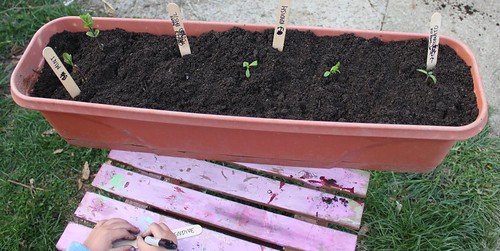
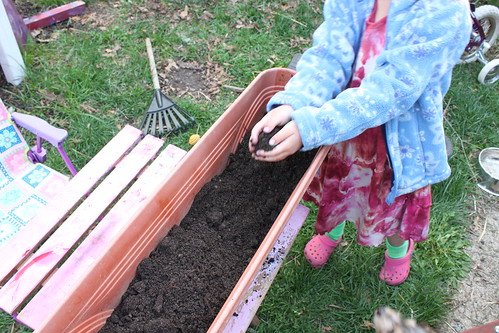

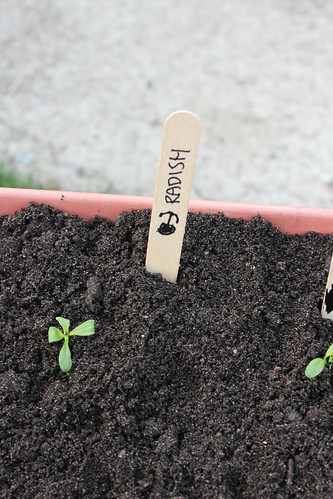
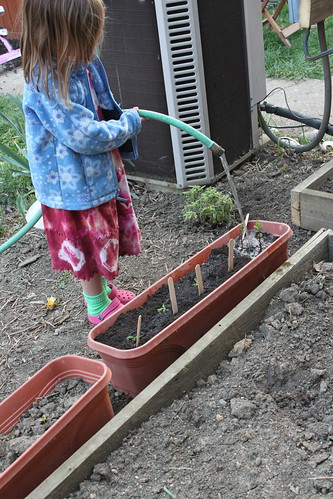
 No flower is more welcomed in my garden than the first buds of our fruit trees and bushes. With the warmth of the past few days, the peach trees in the treeyard bloomed.
No flower is more welcomed in my garden than the first buds of our fruit trees and bushes. With the warmth of the past few days, the peach trees in the treeyard bloomed. I spotted a strawberry flower in the bed yesterday. These beautiful flowers will soon develop into sweet nutritious fruit.
I spotted a strawberry flower in the bed yesterday. These beautiful flowers will soon develop into sweet nutritious fruit.
 The dwarf cherry has buds just waiting to burst. I have no idea what to expect out of these knee high trees. They are purported to produce edible fruit and time will tell whether that is true.
The dwarf cherry has buds just waiting to burst. I have no idea what to expect out of these knee high trees. They are purported to produce edible fruit and time will tell whether that is true. Leaves on the plum tree are unfurling. Because this is the first year for the plum, with a heavy heart I will pinch off any blossoms before they go to fruit. Allowing the tree to grow with no fruit for at least one full season helps it establish roots, branches, and height.
Leaves on the plum tree are unfurling. Because this is the first year for the plum, with a heavy heart I will pinch off any blossoms before they go to fruit. Allowing the tree to grow with no fruit for at least one full season helps it establish roots, branches, and height.
 Raspberry vines are growing and leafed out. I buried several vines to establish some new plants. The blueberry bushes are just starting to sent out leaflets.
Raspberry vines are growing and leafed out. I buried several vines to establish some new plants. The blueberry bushes are just starting to sent out leaflets. should I need to naturally treat animals invading my micro-orchard.
should I need to naturally treat animals invading my micro-orchard.
 Alex built new stairs.
Alex built new stairs. I built a raised bed from some reclaimed deck wood. And I took a crummy picture. The sun was setting and I was TIRED.
I built a raised bed from some reclaimed deck wood. And I took a crummy picture. The sun was setting and I was TIRED.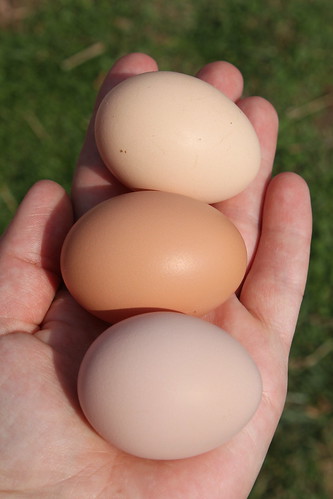 Our
Our Lil played in a post hole. Why not?
Lil played in a post hole. Why not? Lil and the dogs hunted for Easter eggs this morning.
Lil and the dogs hunted for Easter eggs this morning. We planted one
We planted one  I dug furrows and planted three asparagus crowns in the new raised bed. I also tucked three crowns into the strawberry bed. I'll write more about asparagus later because it's a fascinating plant.
I dug furrows and planted three asparagus crowns in the new raised bed. I also tucked three crowns into the strawberry bed. I'll write more about asparagus later because it's a fascinating plant.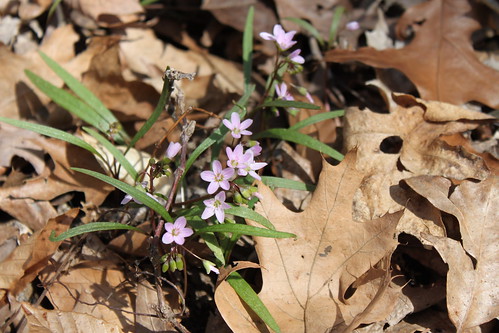 We hiked, slowly and with many stops, around Highbanks Park today, studying wildflowers, birds, and the sound rocks make when thrown in streams.
We hiked, slowly and with many stops, around Highbanks Park today, studying wildflowers, birds, and the sound rocks make when thrown in streams. We shared dinner with my parents and sisters, Alex's parents and brother, and two of my grandparents. Lil was showered with more gifts including the bunny above, hand sewn by my grandmother.
We shared dinner with my parents and sisters, Alex's parents and brother, and two of my grandparents. Lil was showered with more gifts including the bunny above, hand sewn by my grandmother.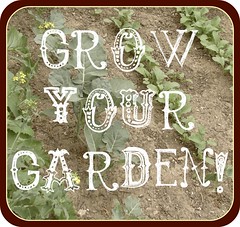 Now that you've decided
Now that you've decided 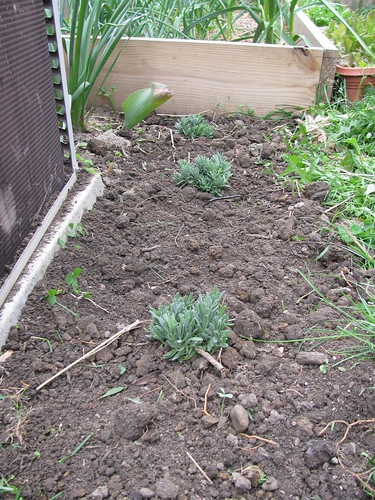
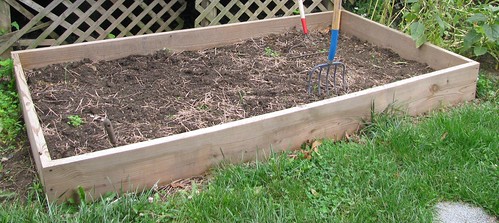 The next common bed style is the raised bed. Here, sides are built from lumber and dirt is filled in the top. The Pioneer Woman has a great
The next common bed style is the raised bed. Here, sides are built from lumber and dirt is filled in the top. The Pioneer Woman has a great 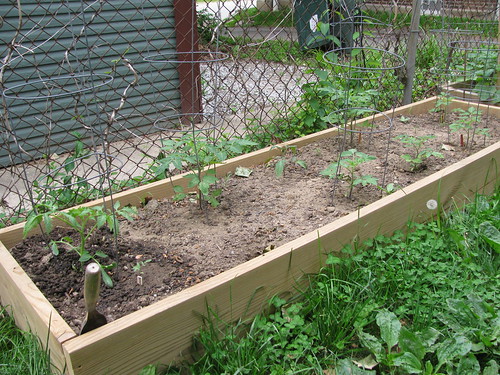 In our second round of bed building, we skipped the anchors. In our experience, the raised beds sides do not bow or move. The weight of the soil holds everything in place just fine. If you are looking to save some labor and cost, skipping the corner anchors might be a good choice.
In our second round of bed building, we skipped the anchors. In our experience, the raised beds sides do not bow or move. The weight of the soil holds everything in place just fine. If you are looking to save some labor and cost, skipping the corner anchors might be a good choice.